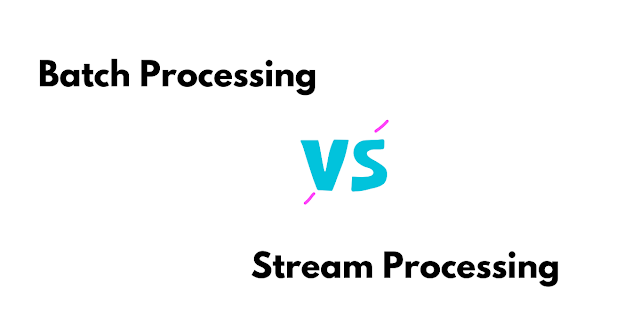7 Leading Digital Trends Impacting the Insurance Industry in the USA
The digital revolution has been sweeping across industries, and insurance - a sector traditionally seen as a slow adopter of technology - is no exception. Today, digital innovation is not merely a trend; it is a dire necessity for the insurance industry to evolve and thrive. As we delve into the nuances of this revolution, let's unfold the top InsurTech software solutions that are dramatically reshaping the landscape of the insurance industry in the USA.
Top Digital Trends Impacting the Insurance
The role of enterprise IT is shifting from one of expense to strategic advantage. Insurance businesses have traditionally used IT as a cost-cutting measure. These days, it's all about how tech can boost revenue and consumer loyalty.
1. Embracing Artificial Intelligence (AI) and Machine Learning (ML)
The Power of Predictive Analytics
AI and ML have emerged as significant disruptors in the insurance industry. They are crucial in harnessing predictive analytics, a method that processes enormous volumes of data to identify patterns, predict future trends, and make more accurate risk assessments. This capability leads to more appropriately priced policies and speedier claims processing.
Chatbots: The New Customer Service Agents
The advent of AI-powered chatbots has revolutionized customer service in the insurance industry. Available round the clock, these digital assistants provide prompt responses, enhancing customer satisfaction and loyalty.
2. The Insurtech Revolution
Disrupting the Traditional Insurance Model
Insurtech, the innovative blend of "insurance" and "technology," is dramatically redefining the insurance sector. It provides digital platforms that offer easy access, transparency, and customization, thereby simplifying the processes of buying insurance, filing claims, and managing policies.
Boosting Customer Satisfaction and Growth
The user-friendly platforms developed by Insurtech companies lead to heightened customer satisfaction and spur industry growth.
3. Telematics and IoT: The Data-driven Approach
Real-time Data Collection
Telematics and the Internet of Things (IoT) are transforming the insurance landscape by enabling insurers to collect real-time data about customers' behavior. This allows for more precise policy pricing based on individual risk profiles.
Personalized Discounts and Services
With the granular data obtained, insurers can offer personalized discounts and services, leading to a mutually beneficial relationship between insurers and policyholders.
4. Blockchain: The Game Changer
Transparency and Security
Blockchain technology, most widely known for its role in the cryptocurrency industry, might have significant effects on the insurance sector. It provides a transparent, secure, and immutable ledger for transactions, reducing fraud risk and enhancing the efficiency of the claims process.
Smart Contracts and Automated Payouts
Smart contracts built on blockchain technology can automate claim payouts when predefined conditions are met, reducing manual processing and expediting claim resolution.
5. The Rise of Cyber Insurance
Addressing the Growing Cyber Threat Landscape
As cyber threats and data breaches increase, so does the demand for cyber insurance. This form of coverage protects businesses from damages resulting from cyber-attacks and data breaches, including recovery costs and potential legal liabilities.
Opportunities Amid Digital Vulnerabilities
As businesses continually digitize their operations, the market for cyber insurance is set to expand. This scenario presents opportunities for insurers to offer comprehensive and customizable cyber coverage.
6. Big Data and Advanced Analytics: The Key to Insightful Decisions
Harnessing the Power of Data
In the insurance industry, big data and advanced analytics are unlocking previously inaccessible insights. Insurers can leverage data to better understand customer needs, improve risk assessment accuracy, and design more personalized products.
Fraud Detection and Prevention
Advanced analytics is instrumental in detecting and preventing fraud, thereby helping insurers save millions of dollars.
7. Customer-Centric Digital Platforms
The Shift toward Digital
In an age where customers are accustomed to seamless online experiences from retail to banking, the insurance industry is also pivoting towards customer-centric digital platforms. These platforms provide customers with the ability to easily manage their policies, make claims, and interact with their insurance providers at their convenience. Insurers must make this transition to digital infrastructure if they are to survive in the modern market.
Empowering Customers
Digital platforms are empowering customers like never before. Customers can now make informed decisions about their policies, get real-time assistance, and have transparency in the process. This new level of customer empowerment is not only raising the bar for customer
service but also enhancing customer loyalty and trust in their insurance providers.
Conclusion
As we move further into the digital era, it's clear that these trends will continue to shape the insurance industry. Insurance providers that can effectively leverage these digital trends will be well-positioned to meet the evolving needs of their customers and succeed in the increasingly competitive market. The future of insurance lies in digitization, and the future is now. You should hire fintech app developers for a significant advantage in embracing digital trends for developing custom software applications.



Comments
Post a Comment